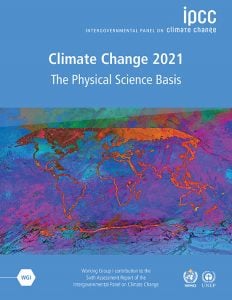Posts Tagged: data
What Our Future Could Be….
The IPCC’s Working Group I included released a new tool with its report in August. The Interactive Atlas displays projected climate impacts based on the underlying data that the working group gathered and used to underpin its findings. Users can select from different parameters to see potential effects on global and regional climates. The tool has two components.
The first enables generation of global and regional maps in a variety of formats. The underlying data covers both observed and projected climate change for time periods, emissions scenarios or global warming levels of interest. The second component provides qualitative information about changes in climatic impact-drivers – variables that drive climate change such as heat and cold, wet and dry, or coastal and oceanic.
Anyone can use the Interactive Atlas to visualize what a changed climate may look like. Users can choose from among different assumptions and output parameters. For example, what will rain patterns look like if global average temperature rises by 3°C.

Instructions for using the tool are provided here. The data used by the Atlas is freely available. Information about the data sets is available here.
The Interactive Atlas is novel tool that enables a user to see the physical impacts climate change is likely to bring under different scenarios. It is worthwhile to explore.
© 2021. What our future could be… is an original post from Yaroki, and may not be copied on other sites.
IPCC Rolling Out 6th Global Assessment
The Intergovernmental Panel on Climate Change (IPCC) has published a report Climate Change 2021: The Physical Science Basis. The report is part of the IPCC’s 6th global assessment of Earth’s climate.

The IPCC is the United Nations body for assessing the science related to climate change. The IPCC provides scientific assessments on climate change. IPCC assessments address relevant impacts and potential future risks. The IPCC was created in 1988, and now has 195 Member countries.
Through its assessments, the IPCC determines the state of knowledge on climate change. It identifies where there is agreement in the scientific community on topics related to climate change, and where further research is needed. The IPCC seeks to present adaptation and mitigation options.
The report addresses the most up-to-date physical understanding of the climate system and climate change, bringing together the latest advances in climate science, and combining multiple lines of evidence from paleoclimate, observations, process understanding, and global and regional climate simulations.
Key findings from the report:
The Earth is warming faster than previously thought.
Unless there are immediate, rapid and large-scale reductions in greenhouse gas emissions, limiting warming to close to 1.5°C or even 2°C will be beyond reach.
Climate change is impacting the whole world.
Climate change is already affecting every region on Earth, in multiple ways. Impacts are not uniform; some areas will be harder hit than others. The nature and degree of risk will vary across regions.
Climate Change 2021: The Physical Science Basis is the result of tremendous, worldwide collaboration. More than 200 authors from 66 countries as well as more than 500 additional contributors drafted the report, which includes over 14,000 cited references. This report is the first of several to be released by the IPCC as part of the current global assessment. The synthesis report is expected to be published in the spring of 2022.
© 2021. IPCC Rolling Out is an original post from Yaroki, and may not be copied on other sites.
